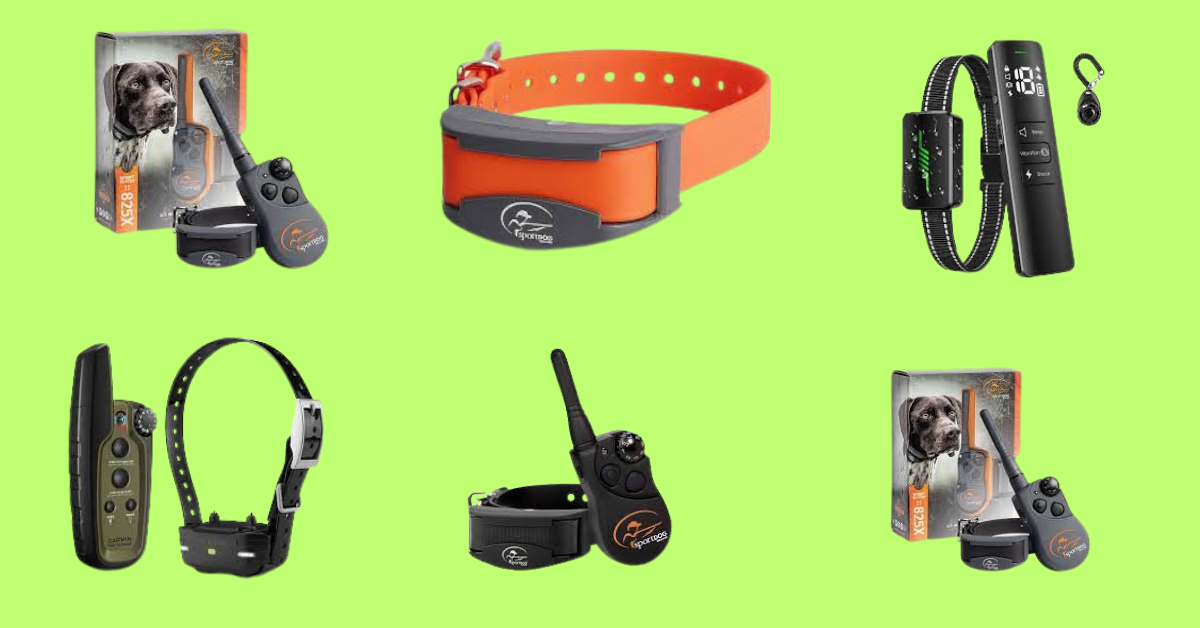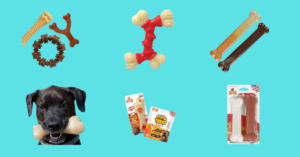Far from being a simple accessory, a dog training collar is a powerful tool designed to enhance communication, reinforce positive behavior, and foster a deeper connection between pet and owner.

Whether you’re embarking on the journey of training a new pup or seeking solutions for behavioral challenges in a more seasoned companion, the right dog training collar can be a game-changer.
Join us on this exploration of the world of dog training collars, where we unravel the intricacies of this invaluable tool, address common misconceptions, and shed light on the positive impact it can have on both the training process and the overall well-being of your canine companion. From understanding the different types of collars to discovering effective training techniques, this guide aims to empower dog owners with the knowledge needed to strengthen the bond with their four-legged friends.
List off Dog Training Collar.
01.SportDOG Brand FieldTrainer 425XS Stubborn Dog Training Collar

02.SportDOG Brand SportHunter 825X Shock Collar – 1/2 Mile Range –

03.SportDOG Brand YardTrainer Family Dog Training Collars- 300

04.Garmin Sport PRO Bundle, Dog Training Collar and Handheld, 1handed Training

05.SportDOG Brand NoBark 10 Collar – Rechargeable, Programmable

06.SportDOG Brand FieldSentinel 1825 Remote Trainer with BodyGuard Health

07.SoldCold Dog Shock Collar, 2023 New User-Friendly IPX7 Waterproof

08.SportDOG Brand NoBark 10 Collar – Rechargeable, Programmable Bark Collar

09.PetSafe® Gentle Leader® Headcollar, No-Pull Dog Collar

10.SportDOG Brand FieldTrainer 425X/SportHunter 825 Add-A-Dog

FAQ….
Q1: What is a dog training collar, and how does it work?
A1: A dog training collar is a specialized device designed to assist in the training and behavior modification of dogs. It typically consists of a collar equipped with various features such as remote control, vibration, sound, or static stimulation. The collar is used as a communication tool to reinforce commands and encourage positive behavior. When a command is given or a behavior needs correction, the collar’s features can be activated by the owner using a remote control, providing immediate feedback to the dog.
Q2: Are dog training collars safe for my pet?
A2: When used responsibly and according to the manufacturer’s guidelines, dog training collars are generally safe for pets. It’s crucial to choose a collar that suits your dog’s size, breed, and temperament. Additionally, always start with the lowest level of stimulation or vibration and gradually increase only if necessary. Consult with a professional dog trainer or veterinarian for guidance on proper usage to ensure your pet’s safety and well-being.
Q3: What types of dog training collars are available?
A3: There are several types of dog training collars, each designed for specific training purposes. These include:
Static or Shock Collars: Emit a mild static stimulation to discourage unwanted behavior.
Vibration Collars: Use vibration as a form of correction, ideal for sensitive dogs.
Sound Collars: Emit a sound, often a high-pitched tone, to get the dog’s attention or discourage behavior.
Citronella Collars: Release a burst of citronella scent, serving as a deterrent without any physical stimulation.
Choosing the right type depends on your dog’s personality and the specific training goals you aim to achieve.
Q4: Can a dog training collar replace traditional training methods?
A4: While dog training collars can be effective tools, they work best when used in conjunction with positive reinforcement and traditional training methods. Building a strong bond through positive interactions, treats, and praise remains essential. The collar serves as an aid to enhance communication and reinforce commands, but it should not replace the foundation of a trusting relationship between you and your dog.
Q5: How do I properly introduce a dog to a training collar?
A5: Introducing a dog to a training collar requires patience and positive reinforcement. Start by allowing the dog to become familiar with the collar without activating any features. Gradually associate the collar with positive experiences, such as treats or playtime. Once your dog is comfortable wearing the collar, begin using the features at a low level, rewarding good behavior. Always follow the manufacturer’s guidelines and seek professional advice if needed.


